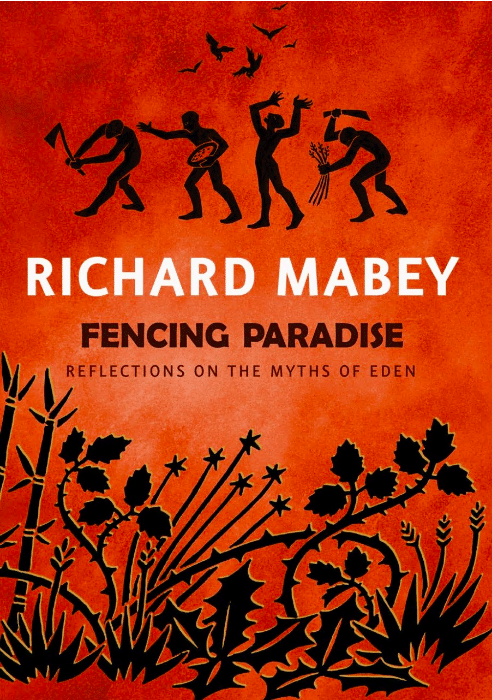Chloë Smith, GiGL Partnership Manager
Written as a response to the Eden Project – the world famous geodesic domed botanical spectacular in Cornwall – this book is as much a reflection on humankind’s relationship with plants as it is on the myths of its sub-title.

Mabey opens Fencing Paradise – Reflections on the myths of Eden by describing his own reaction to walking the grounds of the Eden Project and how it provides a personal, fragmented experience in which one’s imagination is teased with memories. That description is apt too for the experience of reading this book; Mabey’s short essays step lightly from Cornish ‘hedges’ to Mediterranean garrigue scrubland to Amazonian plant hunts, walking the reader gently through landscapes and expertly evoking memories of scents, colours and textures of the natural world.
The content, however, is far from pedestrian. Mabey prompts us to question how we place ourselves in the natural world as we “use” plants – our complex moral relationships with the rest of the nature. For example the stories of sugar and cotton describe their fascinating and frightening human histories. Readers are reminded of the depressing frequency with which humans have over-exploited plant resources and in the process misused fellow people.
This philosophical questioning is supported by a beguiling tour through world paradise mythologies, traditional beliefs about plants and consideration of “modern plant ‘mythology’”, which, “freely mixes science, social meaning and personal feeling”. Mabey cautions against pseudo-history and pseudo-myth, suggesting they are non evidence-based and potentially damaging. He suggests a myth’s “…absorption of, rather than opposition to scientific evidence is crucial”, giving an example of the “ancient reverence for trees” being corroborated by multiple studies. With Mabey as our guide, we travel time as well as geography, meeting Victorian botanists with their passion for “vegetable wonders”, 2nd millennium BCE Mesopotamian bakers and 16th Century East Anglian hemp farming ‘websters’.
The book reminds readers how inextricably linked we are with plants and how our language, our story-telling and myth-making define us and our understanding of the world. He sees the Eden Project as a piece of that puzzle, building on a history of thirty thousand years of human storytelling and image-making not only to serve as an “educational tool” but also expressing a central quality of humanness.
On language Mabey is challenging, warning against meaningless or inappropriate propagation of terminology. He is damning of the term ‘sustainable’, particularly in relation to development – let’s not forget, it’s a term central to our National Planning Policy Framework and many other policies in operation today. He argues that this term, borrowed from tree harvesting in forestry, misses the point of ecosystems and their “innate tendency to become more complex and diverse” and fails to acknowledge that most building materials we use are finite by their nature (the exceptions being plant-derived).
Our place in the natural world is well explored by this book, leaving the reader with a mind full of questions, and concerns, but also a lingering sense of respect and appreciation for plants and our planet’s ecology thanks to the stories, senses and joy of plant biology described. Readers who are interested in the historic cultural connections we have with plants and the role culture plays today in facing ecological challenges will enjoy this book.
